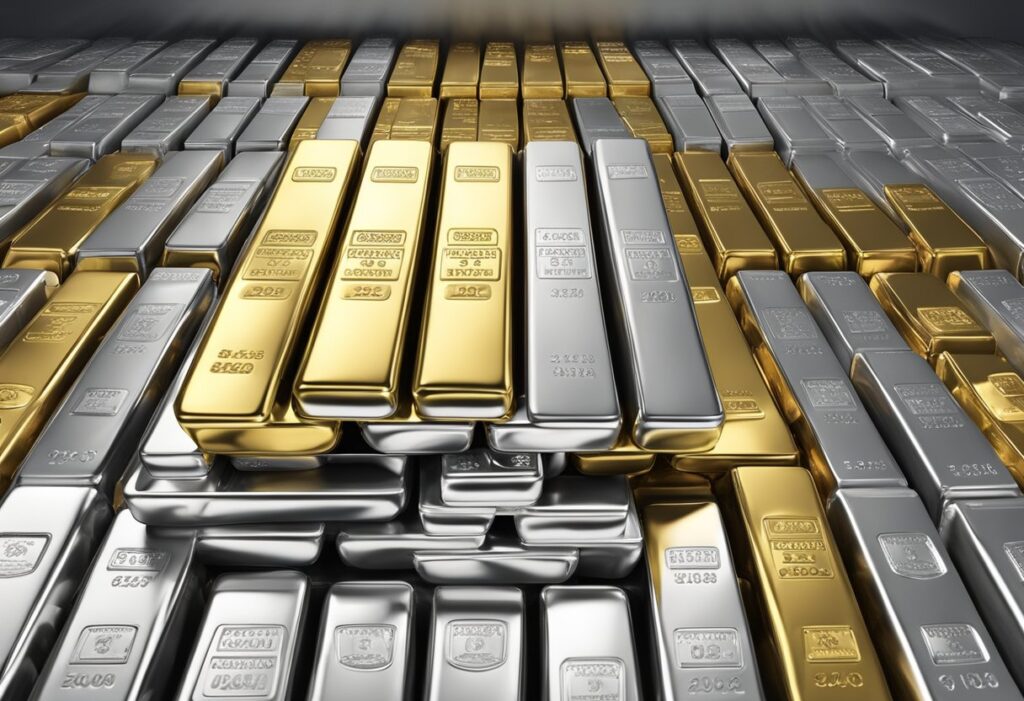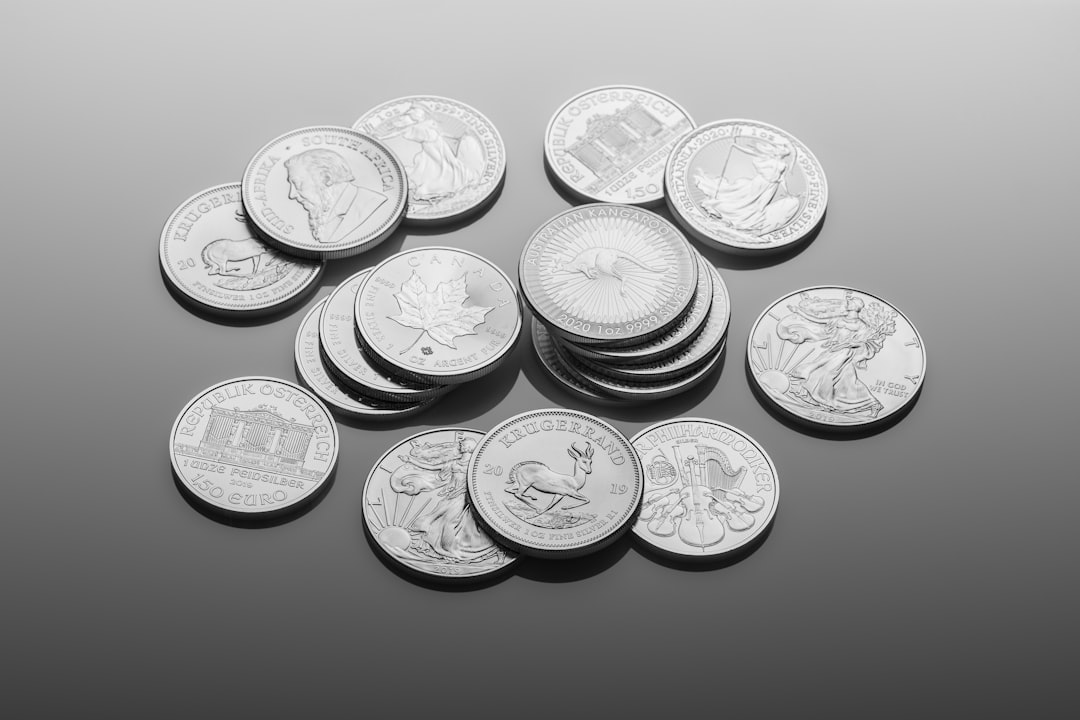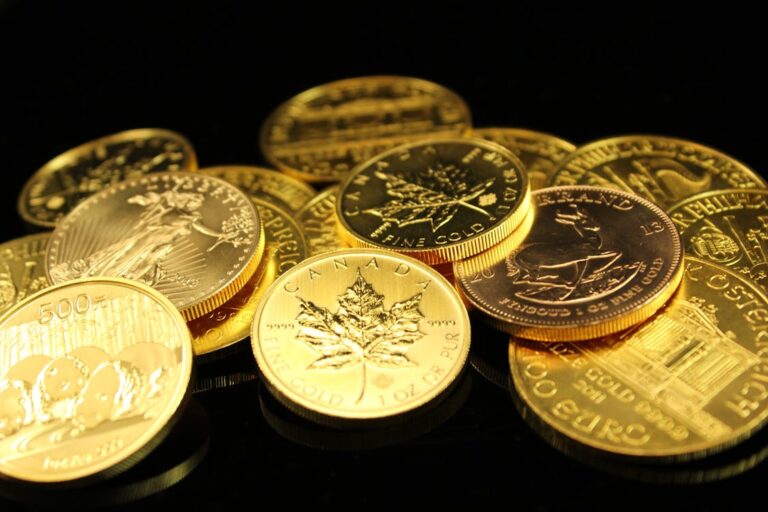
Imagine a world where terms we often take for granted, like money and currency, play a significant role in our daily transactions. You may have used them interchangeably, but it turns out there’s a remarkable difference that deserves attention. This distinction is not just a trivial matter; it shapes the foundation of our financial systems and has influenced the evolution of trade and exchange throughout history.
You’re about to uncover the layers of this fascinating topic. From the emergence of precious metals as a trusted medium to the creation of paper money — each step has its own tales of innovation and, sometimes, economic turmoil. The journey through the annals of monetary history will also bring insights into the ingenious, yet at times controversial, practices of early bankers that have left an indelible mark on the way modern banking operates.
Key Takeaways
- Money and currency, while often used interchangeably, are distinct in their roles and impact.
- The shift from tangible money to paper currency prompted significant changes in trade and economic stability.
- The banking practices developed in history continue to influence our current financial landscape.
Understanding the Key Difference: Money vs. Currency
Imagine you’re in a bustling marketplace centuries ago where barter is king—until you and others discover it’s flawed. You have apples; they have wheat, but alignment? Rarely perfect. Enter the brainwave that changed it all: money. Think of money as a vault—it guards your buying power, unlike currency, which simply facilitates transactions but can’t save them from the relentless wear and tear of time.
- Money: A time-honored storage unit of value.
- Currency: The fluid medium for everyday exchanges.
Economists stress that while both seem interchangeable, their functions differ significantly. With money, your purchasing potential is preserved for future investments and economic growth. It’s resilient, surviving market upheavals.
Currency, on the other hand, is susceptible to whims. As demand fluctuates or policymakers adjust levers, its value can decline, sometimes dramatically.
- Protects value: Money
- Facilitates trade: Currency
The takeaway? Money serves as your economic anchor, currency as the ship that sails the ever-changing financial seas.
Emergence of Valuable Metals as Currency
Imagine, over a thousand years have passed since the first shimmering coins were struck from gold and silver. These metals, already deeply respected, began to define wealth and trade around 700 BCE. You’ve seen them carry names like “durable” and “portable,” making them ideal for transactions—characteristics that you, too, find indispensable in money. Each coin was a promise of value, easily divided and combined for purchases.
Gold and silver, true to their illustrious nature, established themselves as reliable mediums of exchange. You’d recognize them as the bedrock of monetary systems, defending their worth across borders and throughout ages. They functioned not merely as tokens of value but as robust stores of it, a trait you undoubtedly appreciate. These precious metals set a standard for currency that, despite any potential tampering by rulers, proved resilient. Their universal allure guaranteed that they never lost their luster, maintaining purchasing power even when empires fell. Consider the legacy of these metals as a monetary triumph, one that continues to captivate and assure economic stability.
The form you have selected does not exist.
A New Era of Economic Revolution and its Subsequent Downfall
Imagine a time when paper triumphed over coin, a moment in history that flipped the concept of wealth on its head. In ancient China around the 12th century, a financial breakthrough sparked with the issuing of huizi, a form of paper currency introduced by the Song Dynasty. You now had the ability to hold what felt like a treasure trove right in your wallet, easily paying troops and handling transactions.
Crucial Transition:
- From tangible coins to paper
- A government promise instead of real gold or silver
Key Outcomes:
- Surge of Accessibility: Trade and payments were revolutionized by the convenience of paper.
- Inflation: The rapid increase in paper money, unbacked by actual reserves, diluted its value.
The Downward Spiral:
- Financial Overextension: China printed more huizi than it could back with metal reserves, a classic recipe for disaster.
- Market Impact: This misstep led to hyperinflation and set off a chain reaction across currency and stock markets, making history as the world’s first crash of paper currency.
Think of this as a cautionary tale that echoes through the corridors of modern financial markets. From Zimbabwe’s hyperinflation to the Thai currency crisis attracting nervous foreign investors, the pattern is clear. Without prudent hedge strategies and effective financial controls, simulations of this chain of events can still be witnessed. Investors across the globe keep a wary eye on foreign exchange reserves, currency devaluations, and the stability of financial institutions to prevent a similar cascade into economic depression. Remember, exchange-traded funds (ETFs) and exchange controls are today’s tools seeking to avert a dollar collapse or another financial crisis of such caliber.
The Inception of Banking with Gold Artisans
Imagine it’s the 17th century in Europe, where gold not only glitters but serves as a bedrock of wealth. You’ve amassed this precious metal, but where do you keep it? Homes and businesses are risky; bandits and burglaries could spell disaster. But hey, there’s a solution!
Meet the local goldsmith: a secure vault owner and your accidental banker. You and other savvy merchants entrust him with your gold, and he gives you a handy claim check in return. Think of it as an IOU: a piece of paper promising that your gold is safely stored in his vault.
Here’s where it gets interesting:
- Instead of toiling to withdraw your gold, you realize it’s easier to pass the claim check directly for payments.
- Voilà! These checks start changing hands and become a form of money themselves, trusted because each note is backed by real gold in the goldsmith’s vault.
- This movement of funds and the creation of paper money signals a seismic shift, setting the stage for what you now recognize as modern banking.
Table of flow:
| Action | Result |
|---|---|
| Deposit gold with a smith | Receive a secured, backed claim check |
| Transfer of claim checks | Simplify transactions without physical gold |
| Trust in claim checks | Emergence of circulated currency |
The goldsmiths inadvertently kickstart a phenomenal change in capital management. Welcome to the dawn of an era, where a gold artisan becomes the cornerstone of financial evolution!
Enduring Impact of Fractional Reserve Banking
Fractional reserve banking, a practice where financial institutions issue more money than they hold in physical reserves, has remarkably shaped monetary systems across the globe. By allowing banks to lend more than the amount of actual cash on hand, this system plays a pivotal role in managing economic stability and trust among consumers and businesses.
- Central Banks & Interest Rates: Your central banks use this system to adjust money supply, thus influencing interest rates.
- Stability: This banking model aims to stabilize the economy, yet it also presents risks such as bank runs.
- Borrowing: It increases the ability to borrow, fueling business ventures and consumer spending.
- International Impact: Organizations like the IMF monitor these practices to support global financial stability.
- History in the UK: The Bank of England’s inception is tied to these principles, balancing national financial imbalances.
Remember, this system isn’t without criticism; skeptics associate it with potential economic instability during periods of financial stress. Interest rate hikes can be a tool to manage the inherent risks, especially when executed by trusted institutions.
Navigating Today’s Monetary Landscape and Its Complexities
In the realm of finance, currencies like the U.S. dollar and the euro are more than mere tools for trade; they signify economic might and global influence. Today’s economic environment is shaped by intricate relationships among the world’s central banks, including the influential Federal Reserve and European Central Bank.
Contemporary monetary policies, such as those that shape the U.S. economy, hinge on nuanced strategies tailored to manage debt, influence imports and exports, and steer through periods of recession. Fiscal management is vital for countries like Argentina with substantial foreign debt or Japan whose yen underscores its trade prowess.
Your currency’s purchasing strength has changed dramatically over time. To illustrate, a single dollar held far more value in the past compared to now, with increasing prices reflecting this shift. The concept of a dollar purchasing only around 13% of what it could in the early ’70s may startle you.
The dollar, retaining its status as a global reserve currency, plays a pivotal role in international trade despite historical shifts away from a gold standard. This shift has placed immense responsibility on the U.S. Federal Reserve in Washington to steward monetary policy effectively.
Countries like Nigeria bank on the sale of oil to fuel their economies, while Europe grapples with the unity and disparity within the eurozone. Meanwhile, emerging markets in South Korea, Malaysia, and Brazil emphasize the diversity in global economic health and strategies.
China, as the world’s largest economy, contends with the U.S. dollar through its yuan, looking to increase its sway in the foreign exchange market. And not to be overlooked are the euro and the british pound, which hold significant weight in regions like the Euro Zone and London.
Despite the strength of some, economic rumblings like low growth have a cascading effect on the global economy. The u.s. government and others must judiciously manage government spending to contain deficits, creating pathways for stability and preventing debt spirals.
Bonds and currencies fluctuate as central bankers around the world react to ever-shifting market landscapes, with Congress playing a key role in shaping the U.S. debt narrative through legislative action.
The allure of the foreign exchange market is clear as countries vie for the advantage, using their currencies like euros, yen, and pound sterling to cement economic alliances and underwrite global business ventures.
In financial hubs like London, traders eye the euros‘ movement against the yen, while in Washington, policy decisions reverberate, influencing international trade and financial markets from Nigeria to Malaysia.
For a nuanced look at how your currency holds up over time, check out this representation of the dollar’s buying power:
| Year | Equivalent Buying Power of $1 (2024) |
|---|---|
| 1971 | $0.13 |
| 2020 | $0.16 |
| 2024 | Fuller details reflect present conditions |
Take note how the U.S. economy combated a startling 20% decline in purchasing power from 2020 to 2024, stemming in part from extensive government spending in times of need.
With this knowledge, empower yourself to navigate the contemporary currents of finance with an insightful eye towards the mechanisms that drive the currencies you use daily. As the world’s economies interlink more tightly, your understanding of these monetary dynamics is more valuable than ever.
Commonly Asked Questions
Factors Leading to Currency Decline in Modern Markets
- Economic Mismanagement: Large-scale government debt, reckless monetary policies, or loss of trade confidence can lead to a currency’s decline.
- Political Instability: Uncertainty due to political chaos can scare off investors, devaluing currency.
- Loss of Value: High inflation rates diminish currency buying power and worth.
Safeguarding Assets amid Currency Depreciation
- Precious Metals: Gold and silver traditionally hold value even when fiat currencies do not.
- Cryptocurrencies: Digital currencies like Bitcoin may become go-to assets for their perceived stability amidst fiat turbulence.
- Real Estate: Physical property can act as a physical asset that retains intrinsic value over time.
Epochs of Significant Currency Devaluation
Weimar Republic, Germany (1920s): Hyperinflation made the German Mark nearly worthless. Zimbabwe (2000s): Hyperinflation led to the abandonment of the Zimbabwean dollar. Venezuela (2010s): The Bolivar plunged in value due to economic policies and falling oil prices.
Recent Currency Crises and Their Causes
| Country | Year | Cause of Crisis |
|---|---|---|
| Turkey | 2018 | Political insecurity, high debts |
| Argentina | 2018-2019 | High foreign debt, inflation |
| Lebanon | 2019-2020 | Political instability, debt |
Early Warnings of Looming Currency Troubles
- Surge in Inflation: Rapid price increases signal currency value issues.
- Capital Flight: Massive withdrawal of foreign investments hints at a lack of confidence.
- Dwindling Reserves: Low foreign exchange reserves can indicate an inability to support the currency.
Adjusting to a Dollar Collapse Scenario
- Barter Systems: Communities may rely more on trading goods and services directly.
- Local Currencies: Some regions may develop their own forms of tradeable notes or electronic credits.
- Increased Self-sufficiency: Reduced reliance on imports can bolster local economies and foster independence from global currency shifts.



